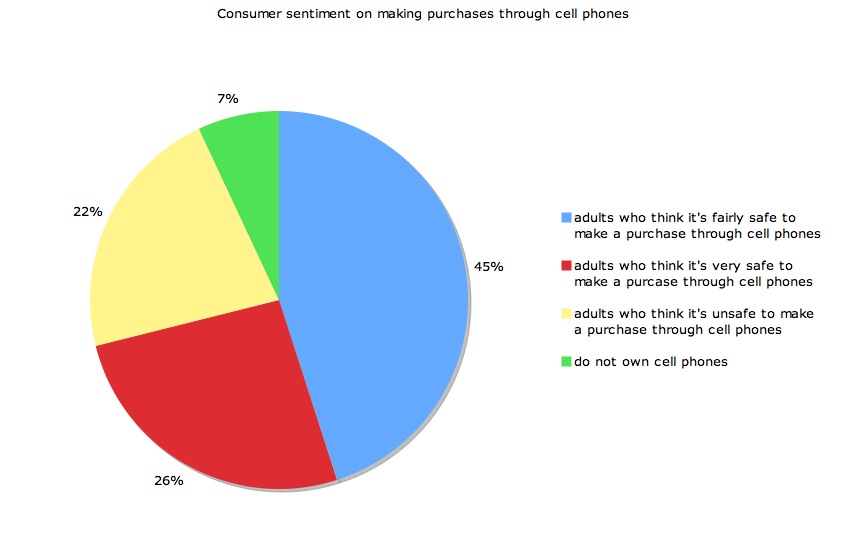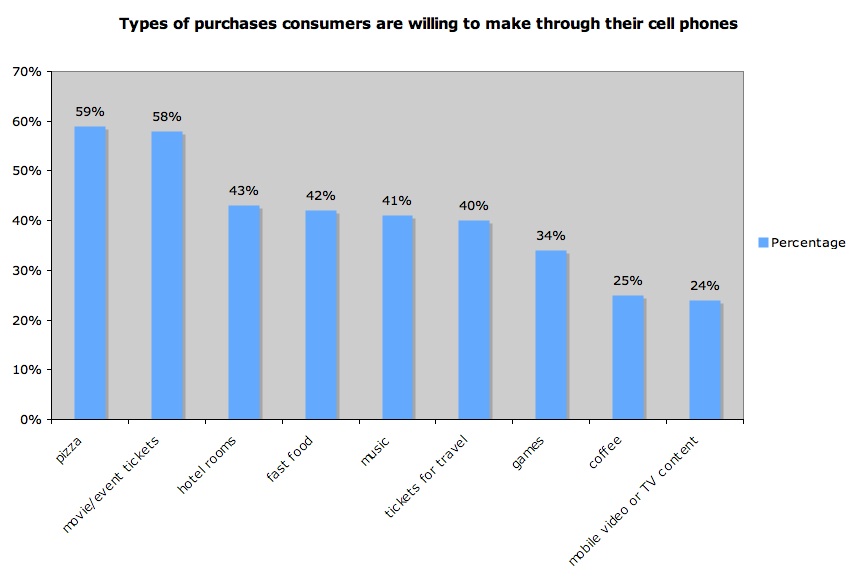Marketers have increased response by segmenting online consumers by location, especially with paid search marketing. These strategies often use IP addresses to target online ads to visitors from specific regions or cities.
Now GPS is being added to mobile devices. The coordinates are accurate within a matter of feet, rather than miles. This is opening an opportunity for much sharper location-based advertising.
GPS-based location-driven ads have the potential to be very effective, according to a survey by Marketing Research Services Inc., on behalf of NAVTEQ. NAVTEQ provides digital mapping services to companies including Garmin and BMW.
MRSI sampled 757 users of NAVTEQ ad-enabled GPS devices who were 18 and older with an average household income over $50,000. They found:
o 72% viewed the ads as acceptable to the navigation experience
o At least 50% of respondents recalled seeing an ad for each of the advertised brands (aided and unaided)
o 19% of people who recalled seeing a specific ad clicked through for more information
o Up to 6% visited a business location because of seeing an ad on their navigation device
The release describing the survey lacks some important details, such as what the ads look like, if they included offers and what “up to 6%” really means. However, I do not dispute the validity of the data. I expect that GPS-targeted ads will become very popular and effective in the mobile advertising world.
Getting your target audience to have a positive experience with your brand is, of course, beneficial. However, not enough marketers are providing real value to their audiences, says Steve Rubel, SVP and Director of Insights, Edelman Digital. More marketers should strive to create a positive and useful experience in a branded context, he says.
Rubel is responsible for keeping Edelman Digital and its clients “ahead of the curve” with the latest ways to effectively manage public relations and marketing. He is also the author of the popular Micro Persuasion blog and maintains a personal Twitter feed with over 27,000 followers. Edelman is the largest independent PR firm in the world with 3,300 employees in 50 offices worldwide, Rubel says.
Rubel cited two companies that are providing useful, branded experiences via the iPhone:
1. Kraft’s iFood Assistant – this app sells for $0.99 in Apple’s iPhone store. It has the following features:
o Recipe browsing
o Recipe of the day
o Shopping lists
o Directions to nearby markets
o How-to cooking videos
2. Tylenol PM’s Sleep Tracker – this app is free and has the following features:
o Log your sleep hours and moods
o View your sleep and mood history over time
o Create a sleep journal
o Get tips for better sleeping
Of course, the iPhone is not the only channel for providing a valuable, branded experience. I am currently working on a Sherpa article that describes how marketers for a cable television channel created a series of SMS alerts that provided valuable, relevant tips alongside a reminder to tune in to a weekly show. The team was able to take a weekly reminder and make it more attractive by adding useful information.
Billing Revolution released some results today from a survey it commissioned on consumers’ mobile shopping preferences. Harris Interactive conducted the survey and queried 2,029 US adults, ages 18 and older, from April 29 to May 1 of this year.
Of adults who receive bills from cell phone and credit card companies, 57% said they trust card companies more than cell phone companies for accurate billing. Here’s a pie chart with more results (you can click it for a larger version):

Of mobile users, more younger users (59%; ages 18 to 34) thought it was at least somewhat safe to purchase through a mobile phone than older users (34%; ages 55+). More male mobile users thought it was at least somewhat safe (50%) than female users (39%).
Of those willing to make purchases:
o 75% would be willing to buy entertainment items, such as:
– Event/movie tickets (58%)
– Music (41%)
– Games (34%)
– Mobile video or TV content (24%)
o 68% would be willing to purchase food or drink items, such as:
– Pizza (59%)
– Fast food (42%)
– Coffee (25%)
o 43% would be willing to purchase hotel rooms
o 40% would be willing to purchase travel tickets

When browsing the Web today, I came across a report of a mobile marketing campaign by a luxury auto brand—not unlike the mobile case study from BMW we published in our B2C newsletter today. Mobile Marketing Magazine covered the campaign well last year, and I want to pass along a few choice bits from their report.
Jaguar Cars created a WAP site in 2007 to promote its new luxury car, the Jaguar XF. The site included:
– Images of the car
– High- and low-res videos
– Downloadable wallpapers
– Jaguar dealer locator
– Email submission form to request a brochure
– Performance stats, innovation info
– Quotes from the press
The site was launched in November to coincide with the Los Angeles Motor show, and was promoted solely through mobile banner ads on sites such as MSN Mobile and Yahoo! Mobile. The ads generated:
– Over 15 million ad impressions
– Over 85,000 UVs to the WAP site
– About a .6% CTR
Results seen on the WAP site include:
– 12,000 video downloads
– 16,000 wallpaper downloads
– Users clicking beyond the homepage stayed for about 2 minutes, 12 seconds, on average
– 1.2% of users submitted their email address for a brochure
– 2.6% of users located their nearest dealer
BMW and Jaguar are not the only auto brands dabbling in the mobile space. A San Diego-based Cadillac dealership ran an SMS campaign in January, and Kia launched a mobile site last year to promote its car Soul. It looks as if high performance, luxury auto brands–brands consumers associate with cutting edge innovation–are delivering campaigns in one of the newest, fastest growing platforms.
I am a huge fan of the AMC television series Mad Men — a drama about the ad men and women of Madison Avenue in the 1960s. That’s why a blog post about the shutdown of Mad Men Twitter feeds caught my eye.
Apparently, fans were posing as Mad Men characters, creating Twitter profiles for them, and posting regular Twitter updates. AMC asked Twitter to shut down the feeds, which angered fans. Read more…










